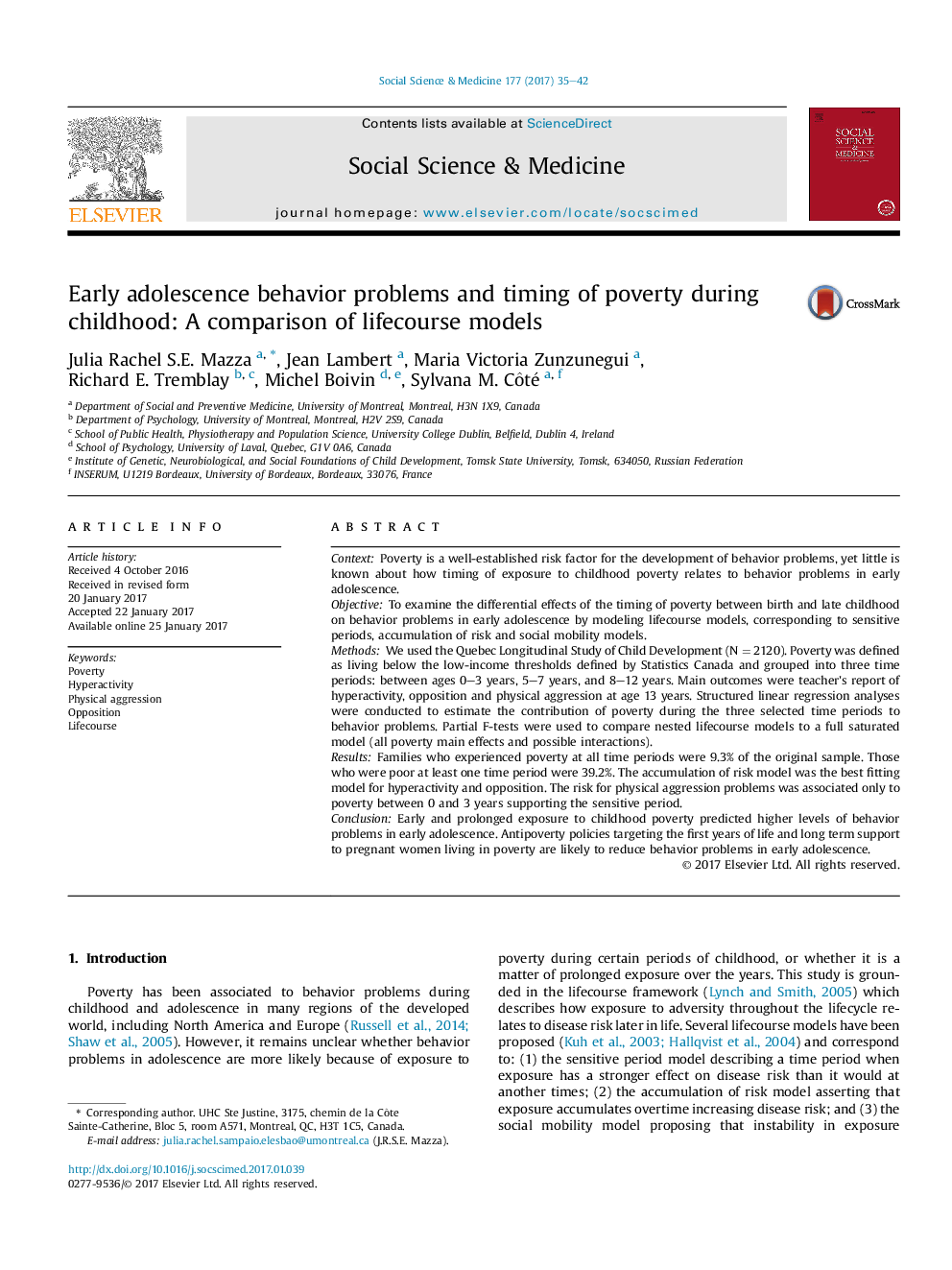| کد مقاله | کد نشریه | سال انتشار | مقاله انگلیسی | نسخه تمام متن |
|---|---|---|---|---|
| 5046709 | 1475992 | 2017 | 8 صفحه PDF | دانلود رایگان |
- Poverty-behavior problems link resulted in both accumulation of risk and sensitive period models.
- Prolonged exposure to childhood poverty increased the risk for hyperactivity and opposition.
- Physical aggression risk was associated with poverty between 0 and 3 years indicating a sensitive period.
ContextPoverty is a well-established risk factor for the development of behavior problems, yet little is known about how timing of exposure to childhood poverty relates to behavior problems in early adolescence.ObjectiveTo examine the differential effects of the timing of poverty between birth and late childhood on behavior problems in early adolescence by modeling lifecourse models, corresponding to sensitive periods, accumulation of risk and social mobility models.MethodsWe used the Quebec Longitudinal Study of Child Development (NÂ =Â 2120). Poverty was defined as living below the low-income thresholds defined by Statistics Canada and grouped into three time periods: between ages 0-3 years, 5-7 years, and 8-12 years. Main outcomes were teacher's report of hyperactivity, opposition and physical aggression at age 13 years. Structured linear regression analyses were conducted to estimate the contribution of poverty during the three selected time periods to behavior problems. Partial F-tests were used to compare nested lifecourse models to a full saturated model (all poverty main effects and possible interactions).ResultsFamilies who experienced poverty at all time periods were 9.3% of the original sample. Those who were poor at least one time period were 39.2%. The accumulation of risk model was the best fitting model for hyperactivity and opposition. The risk for physical aggression problems was associated only to poverty between 0 and 3 years supporting the sensitive period.ConclusionEarly and prolonged exposure to childhood poverty predicted higher levels of behavior problems in early adolescence. Antipoverty policies targeting the first years of life and long term support to pregnant women living in poverty are likely to reduce behavior problems in early adolescence.
Journal: Social Science & Medicine - Volume 177, March 2017, Pages 35-42
